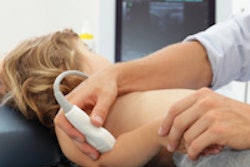
How do you define value? This has become an important question as radiology and radiologists struggle to define their place in a changing healthcare paradigm.
Merriam-Webster defines "value" as follows:
- The amount of money that something is worth: the price or cost of something
- Something that can be bought for a low or fair price
- Usefulness or importance
I find this intuitive, really. The value of something is what it is worth. However, is that something worth the same to me as it is to you? And if I give you something of value, does that make me valuable to you? And what is the value of value?
Under the new healthcare paradigm that's emerging under government-mandated accountable care organizations (ACOs) and the like, healthcare dollars will be divided among member physicians based on the "value" they provide. More accurately, there will be extra money on the table if savings and benchmarks are achieved, and there will be penalties if costs exceed expectations.
As the minority faction at the distribution table, radiologists might just be in trouble. If we try to act as imaging gatekeepers and restrict useless examinations, we'll be told we killed grandma by cutting her access to imaging. Don't laugh -- this is exactly what has been said in the past by those who favor unlimited physician-owned imaging. On the other hand, if we allow unfettered access to imaging, costs skyrocket and the fingers once again point in our direction.
I personally think ACOs and the other "risk" programs are simply clever ways to separate physicians from their hard-earned pay, but not all agree.
A brave new world
To justify and even secure our place in this brave new world, radiologists are being commanded to prove our value, and we are told that our future revenue may depend on this rather nebulous concept. Our leadership has implied that we have to be more visible to patients, that we must make it clear we are "part of the team." Then the patients will finally understand the important role we play, which will somehow translate into a stronger position for us at King ACO's round table.
Having become even more cantankerous in my old age and semiretirement, I view this as little more than a desperate Hail Mary and a naive, knee-jerk response to the coming economic pressures of the (Un)Affordable Care Act. We are being asked to jump up on tables and shout, "We're doctors, too!"
But in its panicky zeal over potential loss of revenue, our illustrious leadership has forgotten something: We are not clinicians. We radiologists are, indeed, doctors, and we are the experts in imaging, but we are not in charge of the patient's care. This is well-illustrated by the concept of reporting our results directly to the patient.
In the June 2015 issue of the Journal of the American College of Radiology, Cabarrus et al presented the results of a patient survey on this topic. They found to no one's surprise that patients preferred to hear the results of imaging exams from the physician who ordered them. I would urge everyone to read the entire report, but in essence, the majority of patients surveyed "appear to prefer the current model of results delivery, in which ordering physicians provide results."
And this makes perfect sense. The usual course of events established decades ago is that results are communicated to the physician who ordered the study, and he or she then discusses them with the patient. There are only two reasons to force this responsibility onto the radiologist, and neither is a good one.
The first excuse is time. Or rather patience. Or rather the lack of patience. You can safely assume that an important, life-threatening result -- a "the patient will die in the next five minutes" type of result -- will be communicated as quickly as possible to the ordering doc. There have been hundreds and thousands of lawsuits on the issue that ensure this will happen.
But a noncritical finding, and even a flat-negative report, generally winds its way to the clinician over a longer time frame. To be fair, in some shops, this could take quite a while: Allow several days for the report to be typed, proofed, and signed, and however long it takes for snail-mail to deliver it to the physician, who then must read it and either call the result or meet with the patient. The entire process could take more than a week, although with our current electronic state of affairs, the nonemergency report should be available to the physician within a few hours of its rendering. Many impatient patients simply don't want to wait. They want the result now. Not next week, not tomorrow, but now.
Patients must remember that I, as a radiologist, cannot pluck them off the street and perform a radiographic examination. In the vast majority of cases, their physician, be it their own internist or an emergency room doc, must order the study. That physician has an established doctor-patient relationship, and knows at least something about the patient and his or her medical history.
When a study comes through on my PACS, I could come running out of the reading room; seek out the patient; act like I'm his or her new best friend, playing a warm, fuzzy Marcus Welby (a TV doc from way back, sort of the opposite of House); and discuss the results of the test. Instant gratification! If you knew me personally, you would realize that I really am a warm, fuzzy, caring kind of guy.
But when those radiographs come though on my PACS screen, I don't know anything about the patient other than the two- or three-word history the physician has lowered himself to give me. If I should happen to have a functioning electronic medical record (a contradiction in terms), I might be able to get some lab values and maybe some additional history. But ... I still don't know the patients like the clinical doctors do. I haven't talked to them, I haven't touched them, and I haven't examined them. So would I be doing them a favor by indulging the itch for an immediate answer?
If I give out instant reports, I place myself between patients and their own physicians. I can tell them what I see, and what they tell me might even enhance my interpretation of the images. But I can't do anything else for them. I am not their doctor. I cannot prescribe drugs to cure the pneumonia I've found, I cannot place a cast on a broken big toe, and I cannot say which surgeon or oncologist to see or what procedure to undergo should I (heaven forbid!) find a cancer.
What happens if in my rush to keep a patient from waiting too long, I miss something on the image, only to discover it later? (Or much later?) And what if a patient is, shall we say, a bit unstable mentally, and he or she totally decompensates in my office after receiving bad news? (I've had this happen to me, by the way.) In the end, my attempt to be kind by humoring a patient's need to know right bloody now may cause more harm than good. And the survey says patients would rather have their own docs do this anyway.
Why the push for 'value'?
So, given that it seems to be a bad idea for radiologists to deliver reports directly to patients, why would our illustrious leadership push us to do so? The answer is value, or rather, the perception (or perversion) of value. Cabarrus and colleagues write:
In an era of value-focused care, some authors have called on radiologists to increase their direct communication with patients in an effort to improve visibility and create value. Improved visibility helps radiologists demonstrate the value they already currently provide. Additional "value" through direct communication could result from a reduced number of intermediary communication errors, decreased delays in patient management, reduced patient stress and anxiety, and improved patient adherence to follow-up recommendations.
Communication errors? Reduced stress and anxiety? How about when the patient hears only every other word I say, and nothing past the word "cancer"? All we've managed to do in that scenario is scare them and then throw them out in the cold until their clinician can see them. The only "value" this practice will create is whatever one might place on the insertion of our faces into the patient's experience. In other words, it is another facet of the pitiful, plaintive cry, "We're doctors, too!"
In discussing this topic with colleagues on the AuntMinnie.com Forums, I have been saddened to find many whose "reality" is that the ACO model is here to stay, and they had better do everything our leadership says to do to secure one's place at the table. What we have here, folks, is a collection of milquetoast millennial physicians who find themselves overwhelmed by the changes around them, changes made by people with no interest in anything other than slashing payments. Changes made by those who think they are smarter than doctors and often have a grudge against them. Changes that pit physician against physician -- and particularly clinician against radiologist.
Many of the mostly younger posters are so frightened of losing their revenue that they are pushing each other out of the way in order to cheer at the front of the crowd when the naked emperor walks by. To be blunt, we all know this "value" thing, this business of pretending to be a clinician, is a crock. But because this is the new "reality," the rubes play along and chastise those who are willing to call it what it is, hoping the new masters notice their loyalty. And even worse, some have declared that they will only talk to patients if they are paid extra to do so. I hope they sleep well at night.
My solution probably comes too late: Avoid joining anything resembling an ACO. You see, we radiologists do add value -- with every single exam. Even a normal chest radiograph adds value, but it isn't "sexy" and doesn't increase our self-aggrandizement.
Most of us do a very good job in the imaging venue. Could we do better? Of course. We could and should have better and tighter communications with our referring clinicians, and we really do try to do this. We could and should do our best to confirm that the patient is receiving the correct exam (even though many ordering clinicians don't want to hear that the exam they ordered won't answer their question, nor do they want to hear that the question is wrong in the first place).
And we can and should talk to the patients, and let them know -- quietly and with dignity -- that we are indeed doctors. We are part of the team whose one and only goal is to make them better.
I, for one, will talk to patients at any time about their exam, provided their clinician is present or at least aware that the conversation will take place and knows what I will say. But I am not going to step in and pretend to be the patient's doctor when that is definitely not my role. That adds absolutely no value at all.
In addition to regular posts in the AuntMinnie.com PACS Community Forums, Dr. Friedman also maintains a blog at www.doctordalai.com. His observations and opinions are entirely his own.



















